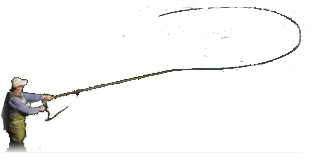
Wayne,
"Do I just dump it in the grinder? How much should I grind it? How fine?"
Please understand that a coffee bean grinder does not grind or cut up dubbing material. The blades are not sharp for cutting. You will need to cut the material off of the Hare's Mask and put it into the coffee grinder. The grinder does nothing but mix the underfur with the guard hairs to give you some excellent dubbing material. Follow the advise that was given by keeping the length of the material around 3/8" and it will blend great. Just short bursts is all it will take. You can take yarn and cut it up into 3/8" lengths and the grinder will separate it and blend it together to form a nice soft dubbing material. You can mix different colors of yarn to vary the color of the yarn dubbing. Make sure to count how many pieces of each color of yarn you used to blend the color you wanted so that you can create it again. You can mix and blend many materials in the grinder. You can purchase one from Wal-Marts for around $12 to $19.
Have fun making your own dubbing.
Warren
Fly fishing and fly tying are two things that I do, and when I am doing them, they are the only 2 things I think about. They clear my mind.




 Reply With Quote
Reply With Quote







